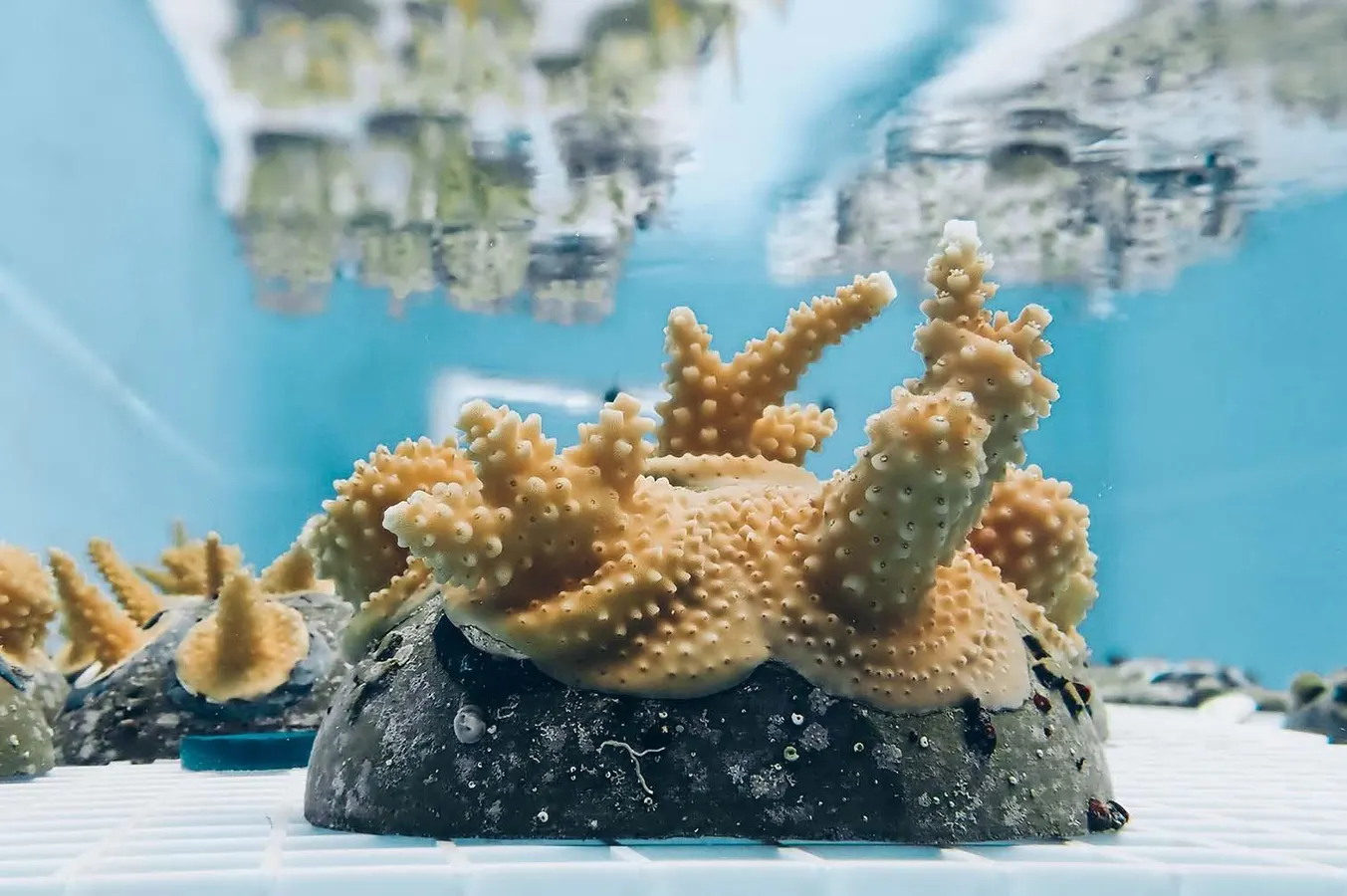By Afdhel Aziz,Contributor,Prince William
Copyright forbes

Coral Vita Fusion Cookies used in coral restoration
Coral Vita | Alannah Vellacott
What if you could plant a coral the way you plant a tree—and bring a dying reef back to life?
That question became a calling for Sam Teicher, co-founder of Coral Vita, a company working to restore one of Earth’s most vital—and most threatened—ecosystems. Their pioneering approach—combining cutting-edge science with a scalable, for-profit model—has earned them global recognition, including the prestigious Earthshot Prize, awarded by Prince William to the world’s most inspiring environmental solutions.
The journey didn’t begin in a research lab or a beachside office. It started in Washington, D.C., where Teicher grew up far from the ocean, but with a deep love for the natural world. He remembers the first time he saw a coral reef—at the age of six, on the Big Island of Hawaii. A lava rock lagoon filled with creatures of every shape and color. It stayed with him.
That moment lit a fuse that would burn quietly for years—through scuba certifications at 13, political science degrees, work in education reform, and a growing awareness that climate change was the thread pulling everything apart. Eventually, that fuse led him to grad school at Yale, where he met his co-founder Gator Halpern. Together, they began asking a different kind of question:
What if we could build a business that helped the planet heal?
From left to right: Sam Teicher, Co-Founder & Chief Reef Officer, Gator Halpern, Co-Founder & President
Rethinking Reef Restoration
Most people don’t realize how important coral reefs are—until they’re gone.
MORE FOR YOU
They protect coastlines from storms. They power tourism and fishing economies. They house a quarter of all marine life, despite covering less than 1% of the ocean floor. And they are dying at an alarming rate. Half have already disappeared since the 1970s, and we’re on track to lose over 90% by 2050.
Teicher saw the urgency firsthand while working on a UN-funded coral nursery in Mauritius. He witnessed the beauty of underwater gardens—and also their limitations in terms of speed to scale.
“It was amazing,” he recalled. “But also very clear that that’s not going to cut it.”
Back at Yale, the two friends launched Coral Vita with a thousand-dollar grant and a big idea: to grow corals faster, stronger, and at a scale never seen before—using science, technology, and a new kind of business model. They weren’t trying to replace traditional NGOs.
They wanted to complement them with something that could scale. Something that could last.
Growing Corals Like Cutting Flowers
The science behind Coral Vita feels almost magical.
Corals, it turns out, can regenerate. “We take cuttings from living coral and grow them on land,” said Teicher, “and then we go down with underwater drills and glue and stick them on the reef.”
Using techniques like microfragmentation, their team grows corals in land-based tanks under controlled conditions—allowing them to thrive in months instead of decades. “We create what we call coral cookies,” he explained. “Instead of putting all of their energy into growing new limestone rock skeleton, they put all of their energy into growing tissue and fusing into their neighbors.”
By simulating future ocean temperatures, they also stress-harden the corals—training them to survive in the warming oceans of tomorrow. “The analogy we like to give is we can give corals the spa treatment—or we can take them to the gym.”
It’s a revolutionary shift: faster growth, more diversity, greater resilience, and less risk.
Using techniques like microfragmentation, Coral Vita grows corals in land-based tanks under controlled conditions—allowing them to thrive in months instead of decades.
Building a Restoration Economy
Today, Coral Vita operates projects in The Bahamas, Dubai, Saba, Saudi Arabia—and soon, Florida. Their flagship farm in Grand Bahama is not only restoring reefs, but also educating communities, training coral farmers, and attracting eco-tourism.
They recently closed an $8.25 million Series A round, the first ever for a coral restoration company, led by Builder’s Vision. And they’re just getting started.
“Our vision is that whether they’re our own farms, franchises, or someone else using our tech—every reef nation around the world should have large-scale, land-based commercial coral farms,” said Teicher.
Rather than rely solely on grants or philanthropy, Coral Vita sells “Restoration as a Service” to clients like hotels, cruise lines, insurers, and governments who depend on healthy reefs. The farms also generate revenue through tourism, tech licensing, and individual coral adoptions.
“We’re not a silver bullet,” said Teicher. “We’re not a Band-Aid. But we are necessary.”
Coral as Culture
One of Coral Vita’s most powerful tools isn’t technology—it’s storytelling.
Their campaigns have ranged from streetwear collaborations to limited-edition beer bottles. A partnership with Corona UK included digital billboards and a newspaper ad that read: “By the time you finish reading this page, 256 corals will have died.”
It’s messaging designed not just to inform—but to move people to act.
“People have said, ‘I didn’t know you could plant a coral.’ Or, ‘I didn’t know how valuable they were. I didn’t know they were dying,’” said Teicher. “We use coral adoptions and it being Instagrammable and a cool story… as a way to then also have a larger conversation.”
For brands, the potential is enormous. Whether it’s linking coral planting to flights, CRM entries, or ocean-themed product drops, Coral Vita is opening doors for companies to take meaningful, measurable action in becoming nature positive—a fast-emerging goal that goes beyond carbon offsets to include biodiversity and ecosystem restoration.
Today, Coral Vita operates projects in The Bahamas, Dubai, Saba, Saudi Arabia—and soon, Florida
A Call to Reimagine What’s Possible
Coral Vita isn’t just restoring reefs—it’s restoring belief.
In a world where ecosystem collapse feels inevitable, they offer proof that innovation, science, and heart can come together to create real, measurable change.
This is the kind of work that deserves to be seen, supported, and scaled. Because we can’t protect what we don’t value.
And we can’t value what we don’t understand.
So let this be a signal: not of despair, but of direction. Toward a future where oceans thrive, businesses uplift, and restoration becomes not the exception—but the expectation.
The reefs are still dying. But the tide can still turn.
And Coral Vita is showing us how.
Editorial StandardsReprints & Permissions



